At a time when women head fewer major U.S. newspapers than they did 10 years ago, there is a place where women run not only some of the nation’s leading papers but the major public TV station and private TV and radio stations, too. In fact, some media leaders and members of the public even feel journalism here needs more men.
This land of female empowerment is not Sweden, Finland, or Norway, home to some of the world’s parent-friendliest policies regarding childcare and maternity leave.
No. When it comes to the state of women in media leadership today, the best place in the world to be a female looking to rise in management is … Bulgaria.
Elsewhere, women aren’t in charge in large numbers because they’ve been discriminated against in ways both explicit and unintentional, because they’ve been labeled too brusque or too weak, because they’ve opted out to raise children. In Bulgaria, women are in charge because journalism has never been taken all that seriously. Under Communist rule, the press was heavily censored and journalism jobs paid little. Today, the mainstream media focuses on tabloid-ish content: entertainment, celebrity news, and scandal.
In Bulgaria, journalism is a low-status profession. Worldwide, though, even in places where the Fourth Estate is considered a vital part of public discourse, the statistics tell a troubling story, one of progress halted and even eroded. Despite making up half the population, and more than half of communication school graduates each year, women represent just 35 percent of newspaper supervisors, according to the 2014 American Society of News Editors (ASNE) newsroom census. They run just three of the nation’s 25 largest titles, eight of the 25 biggest papers with circulations under 100,000, and three of the 25 biggest with circulations under 50,000. Only one of the top 25 international titles is run by a woman.
The numbers also are skewed in radio and TV. In a 2014 Radio Television Digital News Association (RTDNA) survey, women made up just 31 percent of TV news directors and 20 percent of general managers, despite making up more than 40 percent of the TV workforce. The same survey found that women accounted for just 23 percent of radio news directors and 18 percent of general managers.
It’s the same bad news around most of the world. The Global Report on the Status of Women in the News Media surveyed more than 500 media companies in almost 60 countries, and found that men occupied 73 percent of the top management jobs.
The ouster of The New York Times’s Jill Abramson and Natalie Nougayrède’s resignation from Le Monde—which both took place on May 14—made news, and prompted a quick, hot industry-wide conversation about the state of women in journalism. These very public departures were merely the latest sign that, with a few notable exceptions and in spite of years of work toward more diversity, men still run the industry.
As they do most. The Fortune 500 lists just 24 female CEOs. The Financial Post 500, Canada’s version, includes 26.
The results of this gender disparity in leadership are especially pernicious in journalism. To best serve the public as watchdogs and truth-tellers, news organizations need a broad array of voices and perspectives. To thrive financially, they must appeal to an equally broad array of potential viewers, listeners, and readers. Plus, content analyses and anecdotal evidence suggest that a newsroom leader’s gender can have a subtle but important influence on everything from what stories get covered and how, to who gets promoted and why.
Yet, despite overall historic gains and pockets of progress, women lag when it comes to leading. That has many senior female leaders as concerned and pessimistic as they have ever been, and worried that the new generation of digital start-ups is recreating many of the same gender imbalances that characterized old media. “What we’re seeing in media is part of a larger phenomenon for women in leadership in all sorts of fields,” says Melanie Sill, former editor at The (Raleigh, N.C.) News & Observer and The Sacramento Bee and now vice president of content at the public radio station KPCC in Southern California. “We’re slipping, as an industry and maybe as a society, back to a place where women didn’t get the same opportunities and didn’t have the same influence.”
That does not seem likely to change without a concerted effort on the part of industry leaders, male and female alike. “There must be a conscious effort. We can’t just assume that everyone is fair and kind, and that things will just work out,” says Suzanne Franks, a journalism professor at City University London, a former BBC producer, and author of the book “Women and Journalism.” “We assumed that for a while, and that’s why we’re in the mess we see today.”
As part of our reporting on the state of female newsroom leadership, Nieman Reports examined research papers on gender in journalism leadership and interviewed more than 40 academics, media entrepreneurs, investors, publishers, executives, and current and former editors from more than two dozen organizations. We found that solutions do exist, as do bright spots that hint at better approaches to ensure diversity, but that they’re going to take time. All the more reason to start now.
Female Top Editors of Major U.S. Dailies: Today Versus 10 Years Ago
With the ouster of Jill Abramson at The New York Times, there are now only three female top editors at the 25 U.S. dailies with the biggest circulations
7
number of female top editors at the 25 biggest U.S. dailies in 2004
USA Today
Karen Jurgensen
Chicago Tribune
Ann Marie Lipinski
Atlanta Journal-Constitution
Julia Wallace
The Philadelphia Inquirer
Amanda Bennett
San Diego Union-Tribune
Karin Winner
Detroit Free Press
Carole Leigh Hutton
The Portland Oregonian
Sandra Mims Rowe
3
number of current female top editors at the 25 biggest U.S. dailies in 2014
Newsday
Debbie Henley
Houston Chronicle
Nancy Barnes
Seattle Times
Kathy Best
SOURCE 2004: Nieman Reports masthead survey based on Alliance for Audited Media (AAM) average Monday-Friday circulation as of March 31, 2004. 2014: Nieman Reports masthead survey based on AAM average Thursday circulation for the six months ending March 31, 2014, the most recent date for which figures are available
Before they were doctors, lawyers, and prime ministers, bold women became journalists. The boldest rose to lead some of the largest media organizations in the world. That’s not to say it was easy; winning the right to cover something other than “women’s issues” took years of hard work, tough skin, and lawsuits.
Since 1980, women have equaled and occasionally outnumbered men at U.S. communication schools, and as many women as men enter the industry straight out of college. But as survey after survey shows, the percentage of women steadily declines after that. Among journalists with 20 or more years of experience, only a third are women. The statistics are similar around the world. Women opt out of the profession more frequently than men.
That, researchers say, is the single biggest explanation for the lack of women at the top. “In legacy companies in particular, your ability to win those leadership roles is still based on experience as much as anything else,” says David H. Weaver, a professor emeritus at Indiana University who has spent several decades studying newsroom population patterns.
So why do more women drop out?
Some reasons are obvious. Journalism is hard work, with irregular and intense hours, and pay that often compares poorly to other white-collar careers. Women still do the bulk of childrearing and day-to-day maintenance of the home in most parts of the world. “Of the women in my peer group who had kids, I’m the only one who stayed in the newsroom or came back after some time away,” says Aminda Marqués Gonzalez, executive editor of The Miami Herald. “Most of them quit.”
Studies also show that men, sometimes because of the lifestyle choices working parents must make, are more likely to occupy harder news beats. The beats women are more likely to cover, whether because of inherent interest or because they are “softer” news, allow more flexibility. In an analysis of 21,440 New York Times articles published earlier this year, sociologists from the University of Maryland and the University of North Carolina found that women wrote the majority of stories in five out of 21 sections: fashion, dining, home, travel, and health. Men wrote the majority of stories in the seven largest sections, including U.S. news, world news, opinion, and business.
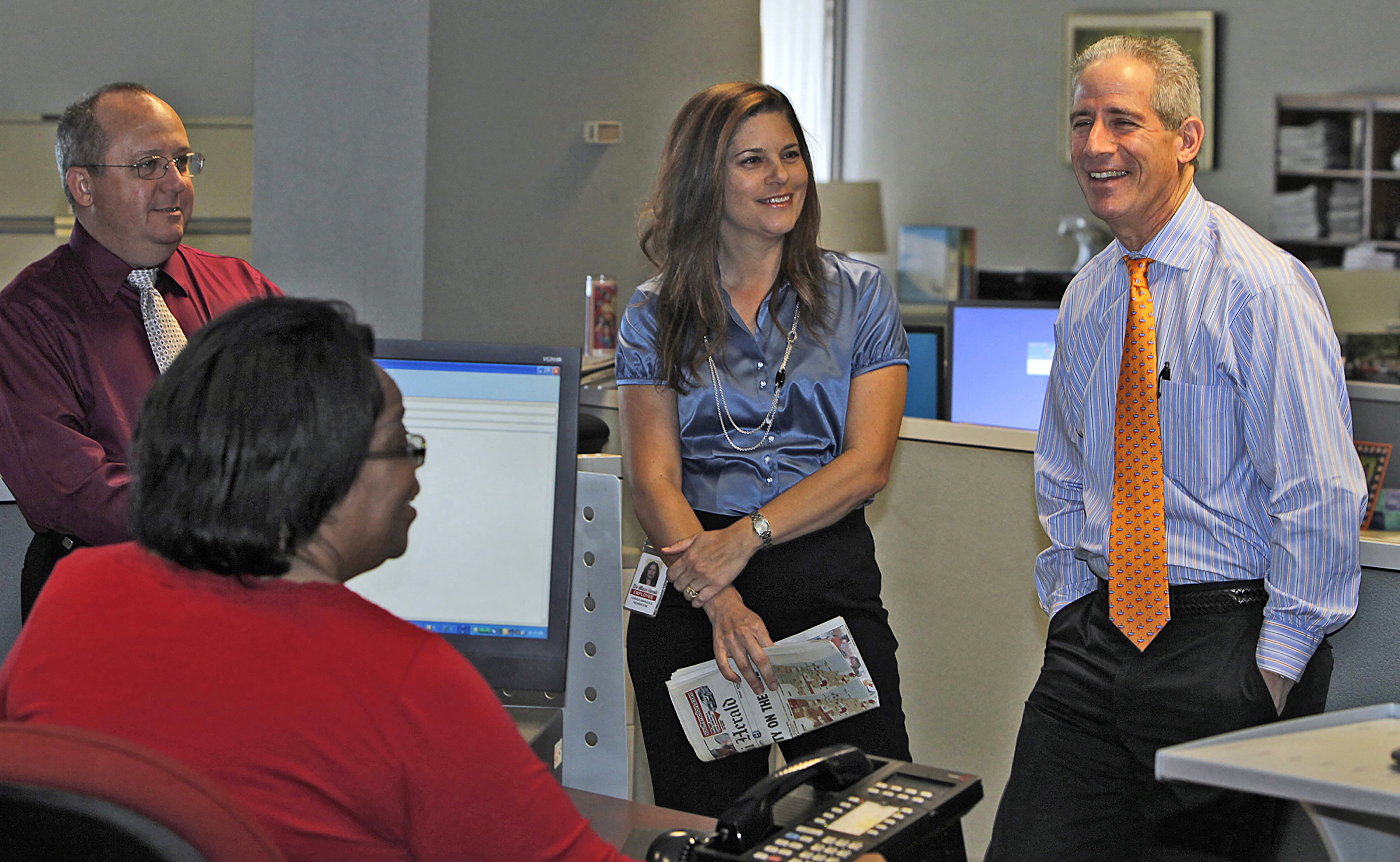
Miami Herald executive editor Aminda Marqués Gonzalez, center, says news organizations need to make promoting women into leadership roles a priority from the start
“What is the path to senior leadership?” asks Susan Glasser, editor of Politico Magazine and former editor in chief of Foreign Policy. “In a place like The Washington Post or The New York Times, it’s going to be core subjects—politics, international reporting, the stuff seen as ‘harder,’ and ‘tougher.’ Those are places where there’s even a smaller subset of women, because those jobs are very time-consuming, they keep you away from home, they make it harder to have a family life.”
Another factor driving women out of journalism is that they still earn less than men. In Indiana University’s most recent survey of working journalists, women reported earning 83 percent of what their male counterparts took home, the same split as 10 years earlier. Some of that discrepancy is due to the fact that women are more likely to work at smaller organizations where salaries are lower, but some of it reflects the pay inequities women face in other fields as well.
Plus, female leaders in both print and electronic media still feel a unique pressure to meet some unstated, gender-specific standard of behavior. “It’s not a guy putting his hand on your knee anymore or calling you ‘sweetheart,’ ” says K.C. Cole, a longtime science writer for the Los Angeles Times and a professor at the University of Southern California’s Annenberg School of Journalism. “It’s everybody finding a man’s show of temper a sign of conviction and power but a woman’s a sign that she’s ‘too shrill.’ ”
That double standard lay at the heart of the conversation prompted by Abramson’s firing. Even before her ouster, a story published by Politico relied largely on anonymous sources to accuse Abramson of losing support within her newsroom by being “disengaged or uncaring” and “brusque.” “Sometimes, qualities women are criticized for are seen as positive attributes in men,” Abramson says. “There’s still some truth to that.”
“The reality for women in those jobs is that you can’t win,” says Janet Coats, former executive editor at the Sarasota (Fla.) Herald-Tribune. “You have to be tough. You have to be strong. You have to be assertive to get to the place where you can be considered for a leadership job. But once you’re there, everybody wants you to be mommy.”
Journalism is certainly not the only professional field in which women start at parity with men but gradually slip to a minority of the workforce—and, in particular, of leadership. “In law and medicine, the explanation is career change or dropouts; people decide they can’t work that much,” says Philip N. Cohen, a sociologist at the University of Maryland who studies gender, family, and social change and co-authored the Times article analysis. “But in journalism, when you talk about top jobs, it seems as if it’s as much about hiring and promotion.”
So a self-perpetuating cycle can come into play, at least in legacy companies. Men are in charge, and are more likely to promote other men. Women see fewer women rising to top jobs and grow more likely to leave journalism. Thus, fewer women are around to apply for those promotions. Men become even more likely to promote other men to both the most important posts in the business and the jobs that serve as steps toward them.
The Gender Divide in Degrees, Pay, & Experience
$53,600
Median income for male journalists in 2012
$44,342
Median income for female journalists in 2012
36.9%
Percentage of journalists in 1998 who were women
37.2%
Percentage of journalists in 2013 who were women
SOURCE “The American Journalist in the Digital Age,” by Lars Willnat and David H. Weaver, Indiana University Department of Journalism, 2014, based on 2012 income data collected in fall 2013, the most recent date for which figures are available
SOURCE American Society of News Editors Newsroom Census, 2014. 1998 is the earliest year for which this data is available. The 2014 report is based on data collected as of Dec. 31, 2013, the most recent date for which figures are available
One obvious solution: Implement more formalized hiring processes. Research by Cohen and others suggests that large companies are less likely to discriminate against women when formal personnel procedures are in place. A formal process—one in which a certain number of applications must be considered, for example, or for which a diverse applicant pool is required—works to limit managerial discretion and to weaken old-boy networks, still the way many journalists climb the masthead.
“If more hiring editors were willing to look at résumés with an eye for the gems in the untraditional parts of those résumés, then women and people of color would get a better shake at hiring and promotion,” says Geneva Overholser, former editor of The Des Moines Register. “What happens instead is that we all self-replicate: ‘Ah, this fellow reminds me of myself when I was a cub reporter!’ The guys at the top had pretty similar paths upward, and it’s those paths that strike them as appropriate.”
Academia is one field in which women’s progress has been more consistent, at least compared to journalism and the corporate world. According to a 2012 study by the American Council on Education, 26 percent of U.S. college presidents are female. Among presidents hired between 2009 and 2011, almost 30 percent were women. Harvard University economist Claudia Goldin suspects one reason is that college boards are held accountable for their hiring practices, both by faculty members and the general public. “People are watching,” she says. “Scrutiny helps.”
Digital is a brave new world, sort of. The hierarchy of digital newsrooms, even many digital newsrooms within legacy media companies, is much flatter and more democratic. “It’s not that traditional chart: reporter, assigning editor, section editor, managing editor. It’s not that kind of ladder you have to climb,” says Cory Haik, executive producer and senior editor for digital news at The Washington Post. “If you walk in with a specific skill set that we need for a specific project, you’re going to be leading people immediately.”
Haik has been a manager for most of her 17 years as a professional journalist in New Orleans, Seattle, and now D.C. During her first few years in leadership, she frequently wore a suit to work. But that was to make herself seem older, she says, rather than like one of the guys.
Many digital-first operations seem to be replicating the same gender disparities found at legacy outlets
Millenials bring a different set of expectations to newsrooms, traditional and otherwise. They’re far less wedded to the idea of staying at one organization, or to what title they have. They’re far more aware of the need for a diverse set of voices, and have fewer preconceived notions about what a leader looks like. They hear “editor” and are just as likely to think Arianna Huffington as Ben Bradlee.
Emily Ramshaw’s mother, Mary Leonard, started her career on the lifestyle pages and had to fight to win the right to cover hard news. She eventually became The Boston Globe’s deputy Washington, D.C. bureau chief. “I have this one really clear memory of calling her at work at 5 p.m. sobbing hysterically because I couldn’t find my soccer shin guards and was going to miss my ride to practice,” Ramshaw, editor of the nonprofit Texas Tribune, recalls. “I could hear her responding to reporters in the background asking questions about their stories, and I remember the angst in her voice about being pulled in two directions at once. I sincerely doubt that back then many of her male colleagues were fielding that kind of phone call.”
Ramshaw’s path has been very different, and far smoother. She began as a City Hall reporter at The Dallas Morning News and now, at 33, leads the Texas Tribune. “I’ve been so lucky to never have felt a moment of, ‘I can’t do that’ or ‘I can’t rise to that level of the food chain,’” Ramshaw says. She thinks women have found greater opportunities in digital newsrooms such as the Tribune, places where there is “no institutional baggage or hundred-year-old culture.”
Yet many digital-first operations seem to be replicating the same gender disparities found at legacy outlets. The top managers at most of the major online news sites, the people setting the vision and doing the hiring, are men. The rock stars of the emerging new media are data analysts and coders, a population that is still male dominated. Women now account for around half the undergraduate degrees in science, technology, engineering, and math, but just a quarter of the U.S. workforce in computer and mathematical sciences, according to recent data from the National Science Foundation.
As Emily Bell, director of the Tow Center for Digital Journalism at the Columbia University Graduate School of Journalism, noted in March in a scathing essay on The Guardian’s website, several recent high-profile start-ups have been dominated, or at least headlined, by white men: Nate Silver at FiveThirtyEight, who told an interviewer that “clubhouse chemistry” was a key aspect of his hiring process; Glenn Greenwald at First Look Media; Ezra Klein at Vox.com.
The criticism of Vox put Melissa Bell in a strange position. She is one of three co-founders, along with Klein and Matt Yglesias. They had made a conscious choice to tell a streamlined narrative of the website’s founding that featured Klein as the most prominent public face. In hindsight, Bell says, the criticism was a learning opportunity: “Ezra never left me out of any interview. He always said, ‘We’re the founders.’ I didn’t think it was a problem until this whole conversation started. What was problematic was, I wasn’t representing the women on my staff who were so proud of the work they were doing.”
Some of the new newsrooms take their cues (and sometimes a bit of their start-up cash) from the entrepreneurial Silicon Valley culture, which is as male-dominated as any old-school newsroom. A 2014 study by Fortune found that just 4.2 percent of partners at large venture capital firms—firms that had raised at least one fund of $200 million or more—were women. The number of women in venture capital is even worse than the number of female CEOs in Fortune 500 companies.
“The funding universe is dominated by men, the upper ranks of the journalism world remain dominated by men, and, I daresay, there is a tendency for men in existing leadership positions to look to Bright Young Men as the most likely miracle-makers for producing shiny new solutions to thorny problems,” says Monika Bauerlein, co-editor in chief of Mother Jones.
The masthead at BuzzFeed belies the industry-wide statistics. The political and pop culture website’s founders, chairman, and editor in chief are all men. But at a time when there are so few women running major U.S. newspapers, the executive editor and deputy editor in chief of one of the world’s fastest-growing news operations are both women, as are a majority of the newsroom’s senior leaders.
“Because we’re essentially making this up as we go along, you can be a 25-year-old woman and do a killer investigation for us. We’re not going to say, ‘Wait your turn’ or ‘Pay your dues,’ ” says Shani Hilton, the deputy editor in chief. “If you have a great idea and the ability to go execute it, and if you can lead people, you’re going to get that chance.”
Still, Hilton, a manager at 29, worries about what happens when all those bright, eager editors and reporters she keeps hiring decide they want a better balance of work and personal lives. “We don’t have a lot of mothers on staff,” she says.
Doree Shafrir, BuzzFeed’s executive editor, has been a professional journalist for 10 years, at BuzzFeed, RollingStone.com, and Gawker, but has never worked for a female boss. She says she has no female mentors to help her navigate the increasingly tricky path of top newsroom managers. “Men take it for granted that there are people like them in positions of authority, people who will look out for them and help them along,” she says. “For those of us in this generation that’s coming up right now, we don’t really have that certainty. Making it up as you go along is very cool, but it’s also occasionally kind of terrifying.”
Managers interested in retaining women and men who want children so that they can rise into leadership roles must promote policies that make balanced lifestyles easier—and model that behavior themselves.
Flexible work schemes made the path to senior leadership a little easier for Nancy Gibbs, who in 2013 became the first female top editor in Time magazine’s 91-year history. “Time Inc. always made it easy for both men and women to explore other interests over the course of their careers,” Gibbs says. “I have taken leaves of absence to teach, to write books, to be at home with my daughters. The flexibility made it much less tempting to leave.”
But family-friendly policies, even government-mandated ones, only do so much. Carolyn Byerly, a professor of journalism and media studies at Howard University and editor of “The Palgrave International Handbook of Women and Journalism,” notes that women in journalism are better able to advance when these national policies are in place: prohibition against workplace discrimination, generous parental leave for men and women, childcare centers. Sweden and Finland have those things, and in Finland there are more female journalists than male ones. Yet women are still underrepresented in top leadership roles. So family concerns aren’t the only explanation.
In their book “The Confidence Code,” ABC News contributor Claire Shipman and “BBC World News America” anchor Katty Kay argue that women suffer from a “confidence gap” that contributes to inequities in many industries. Compared with men, they write, women generally underestimate their abilities and understate their qualifications. They don’t apply for jobs unless they meet all of the criteria laid out in the job description. They don’t push for raises and promotions unless they have solid figures to back up their efforts. They are far more likely to talk down their abilities, to apologize for starting a conversation about their career goals.
Testosterone plays a part in men’s tendency to promote themselves more eagerly than women. As Shipman and Kay note, higher levels of testosterone are correlated with an appetite for risk taking, even—sometimes especially—in the face of tough odds.
Newsroom leaders know precisely what they’re talking about. “Men were much more likely to come up and say, ‘I’m really interested in that job,’ or ‘I really deserve more money,’” says Overholser. “We’ve really got to be more aggressive in making sure our voices are heard, even if we’re not always as comfortable doing that.”
Goldin, the Harvard economist, studied undergraduate economics majors and found that young women were far more likely to be discouraged by poor grades than their male counterparts. Young women who were contemplating specializing in economics but did not do well in introductory classes were more likely to choose a different major than prospective male economics majors who struggled in introductory courses.
“I feel like girls cave into themselves around 11 or 12,” says Anna Holmes, the founding editor of Jezebel and now a columnist for The New York Times Book Review and an editor at Fusion, the cable network targeting millenials. “Something happens in our socialization where I think there’s a lot of self-doubt among young women that is hard to get rid of even after they’ve left high school and college. Then it is echoed in the workplace, because they learned at a young age that society in many cases values them for their attractiveness more than anything else.”
In 2002 and 2003, Tracy Everbach, an associate professor at the University of North Texas’s Mayborn School of Journalism who has written about the challenges facing women in newsroom leadership, studied the impact of female leadership at the Sarasota (Fla.) Herald-Tribune. At the time, the paper had a female managing editor, editor, and publisher. What she found was that the newsroom culture was more family friendly and reflected “feminine” traits, such as openness, teamwork, and communication.
Reporters were encouraged to have home lives. They participated in the process to select a new executive editor. Top managers spent more time than in previous administrations walking the newsroom and talking with staff. One female editor worried that the inclusive, nurturing environment went too far: “Where are all the big men of journalism, the Jimmy Breslins?” she asked Everbach.
“When I was editor in Sarasota, I was very conscious about modeling when I was going to be out of the office. I would send e-mails to the whole newsroom: ‘I’ll be gone for the next 90 minutes because I’m taking Rachel to a pediatrician’s appointment,’ ” says Janet Coats, who was editor during the study. “The men were the ones who showed up in droves saying, ‘Thank you, I need to go coach soccer this afternoon, and because of you I feel like I can.’ ”
“The best female editors may tell you gender doesn’t matter,” Everbach says. “But the facts tell us that having women in those jobs makes a difference further down the line.”
Mother Jones, which Monika Bauerlein co-edits with Clara Jeffery, offers generous family leave and allows parents to work from home when they need to. In explaining the genesis of the co-editorship, Jeffery put it this way: “We shared a frustration for where the organization had been and a vision of what it could be, and we didn’t see why we shouldn’t force multiply. It also helps us bounce ideas off each other in a very rapid fashion and at times it’s almost like a Vulcan mind meld.”
Kathleen Carroll, the executive editor for the Associated Press, calls it “snobbery” to focus on the Times and a select few other large publications when gauging the state of women in modern media leadership. Women, she notes, run plenty of newsrooms, large and small. Women hold the top positions at NBC News and at Al Jazeera America, at Time, Mother Jones, Harper’s, and National Geographic, at Slate and The Huffington Post. Carroll herself runs one of the largest news-gathering organizations in the world. According to the latest ASNE newsroom census, 63 percent of the news organizations surveyed have at least one woman among the top three editors.
“The focus has been on the old ASNE ladder of success, and I just think there’s more going on in more news organizations than the shorthand conversation about this has revealed,” Carroll says. “Do news organizations need to do a better job of having newsrooms that reflect the communities they cover? Absolutely. Is this a gender-only issue? Absolutely not.” (It’s definitely not a gender-only issue. In the most recent ASNE and RTDNA surveys, minorities made up just 11 percent of newspaper supervisors, 14 percent of TV news directors, and 12 percent of radio news directors.)
Barbara Cochran, who worked in print before becoming vice president for news at NPR and vice president and Washington bureau chief for CBS News, sees things changing for the better, too. She remembers the days in the early 1970s when the National Press Club was male only. Women had to sit upstairs in the balcony and were not allowed to ask questions. Now in TV, she observes, the number of female news directors is increasing: “It used to be that a female news director would be in a smaller market or working for a less popular network affiliate. Now you find them at all levels, all market sizes. There’s been growth, for sure.”
NPR has had strong women’s voices from the start, Cochran points out: Cokie Roberts, Linda Wertheimer, Nina Totenberg, and more recently Melissa Block and Renee Montagne, people to whom young journalists can look as role models.
Still, Cochran believes more needs to be done: “I think companies thought, ‘Oh, this problem was solved.’ And now we’re recognizing that it’s much more subtle, much more difficult.” She cites an ABC mentorship program in which senior male executives mentored younger colleagues, many of them women and people of color. “That was a very valuable thing, to have somebody you can talk to,” Cochran says. “A lot of times you’re afraid to ask for help. Programs like that can really make a difference.”
This kind of sensitivity to gender and racial balance has made a difference at Al Jazeera America, according to Kate O’Brian, the network’s president. “If you came into our newsroom, you’d be quite taken by the gender, age, and racial diversity,” she says. There are two women on the senior editorial team and a number of women among the senior executive producers as well as in the technical department. “The ability to sit in a room with people of different backgrounds, different ages, different nationalities, and discuss how we’re covering the various stories, there’s no substitute for it,” O’Brian explains. “There are a million different perspectives and if you don’t hear them, you’re not going to be able to explore all sides of the story.”
Female Top Editors of the 25 Biggest International Dailies
The 25 newspapers worldwide with the largest circulations range from Yomiuri Shimbun, one of Japan’s national newspapers, with a circulation of about 9.7 million in 2013, to Rajasthan Patrika, an Indian paper with a roughly 1.7 million circulation. Wanfen Li, editor of the Guangzhou Daily, is the only female in the top editorial post at any of the biggest 25 newspapers worldwide. The Daily, with a circulation of 1.88 million, is the official paper of the municipal Communist Party committee in the provincial capital city of Guangzhou
1
Yomiuri Shimbun, Japan
Asahi Shimbun, Japan
Mainichi Shimbun, Japan
The Times of India, India
Dainik Jagran, India
Cankao Xiaoxi, China
The Nikkei, Japan
Bild, Germany
People’s Daily, China
Chunichi Shimbun, Japan
Dainik Bhaskar, India
Wall Street Journal, U.S.
Hindustan, India
Malayala Manorama, India
The Sun, U.K.
Amar Ujala, India
Guangzhou Daily, China
New York Times, U.S.
Nanfang City News, China
Eenadu, India
Yangtze Evening News, China
Daily Mail, U.K.
Chosun Ilbo, South Korea
Qianjiang Evening News, China
Rajasthan Patrika, India
SOURCE World Association of Newspapers and News Publishers World Press Trends report, 2014, based on circulation data for 2013, with the exception of data for Chinese papers, which is from 2012. Sports Nippon, a Japanese paper that came in at number 22, was excluded to keep the focus on general interest newspapers
Meredith Artley, vice president and managing editor of CNN Digital and president of the Online News Association, found the conversation prompted by Abramson’s ouster—Did gender play a role in her firing? Are women held to a different standard? Is there a “crisis of women”?—almost cringe-inducing. “I’m not saying we don’t have a problem, but the way we talk about it can be a distraction,” she says. “You don’t see men have these kinds of conversations. They talk about the work, not about, ‘Are you leaning in or are you leaning out?’ ‘Are you feeling guilty about not balancing work and family?’ ‘Are you held to a different standard as a leader?’ Yes, there is a problem. But what’s the actual conversation we can have that will make things better?”
One place that conversation might start: Does who runs the show at the big-name organizations make a difference? Abramson’s hiring was celebrated and her firing debated precisely because the Times remains one of the exemplars for the rest of the industry. And content analysis studies suggest there are subtle differences between content and story selection at male- and female-driven organizations.
A 2011 study by two University of Texas researchers looked at how two Virginia papers covered the HPV vaccine Gardasil. It found that the publication with the more gender-balanced leadership and newsroom interviewed a broader range of sources, covered the issue more prominently, and offered “a richer perspective and understanding of the topic.”
Last year, Everbach, the Mayborn School of Journalism researcher, analyzed coverage of drug wars on the Mexico-United States border. She talked to both Mexican and U.S. reporters to see if gender played any role in story selection. Her conclusion: “The male reporters tended to approach drug war stories as body counts: ‘This many people got killed.’ ‘This drug cartel is in charge, and this drug cartel is trying to take over.’ The women covering the border war were more interested in stories that looked at the impact on families, on children, on border towns caught in the crossfire.”
Pulitzer Prize-winning journalist Jack Fuller was editor of the Chicago Tribune when Anita Hill accused U.S. Supreme Court nominee Clarence Thomas of sexual harassment. He found the whole thing sad. His city editor—future Tribune editor and Nieman Foundation curator Ann Marie Lipinski—had a different response: “Ann Marie came in and said, ‘It’s a story not just about a controversy over who will be the next Supreme Court justice, but about race and gender and people’s reaction to both those things. We need to talk to black women and black men and white women and white men.’ Our coverage broadened and got much, much, much more exciting and interesting because she had this very different perspective.”
Promoting the widest possible range of people into top journalism jobs—not just women, but people of different ethnicities and socioeconomic backgrounds—is smart business, particularly for news organizations desperate to appeal to the broadest range of readers. As publisher of the Tribune Publishing Co., Fuller appointed female publishers at four of the chain’s 10 papers: the (Newport News, Va.) Daily Press, the Orlando Sentinel, The Baltimore Sun, and The (Allentown, Pa.) Morning Call. “I don’t want to sound like I don’t care about equity, but for me, it was about organizational excellence,” Fuller says. “You want the best people. That means you don’t just take from 50 percent of the talent pool.”
Among Abramson’s proudest accomplishments at the Times was the number of women she promoted or helped promote in a very short time span. It was a conscious choice on her part, one several industry trailblazers now wish they had made to a greater degree themselves.
“I didn’t intentionally seek out women, the way I think Jill [Abramson] did,” says Sandra Mims Rowe, former editor of The Virginian-Pilot and The Oregonian. “Self-consciously, I didn’t want ‘the guys’ to think of me as someone who gave preference to women. In hindsight now, I don’t think it was about giving preference; I think promoting talented younger women (and men) perhaps before they have touched every base on the more traditional management trajectory is really about good journalism and good business.”
By promoting women, Abramson didn’t guarantee that Dean Baquet’s successor will be a woman. But she did ensure that the next time the big office opens up at the Times—or The Washington Post, The Boston Globe, The Huffington Post—the potential applicant pool will include more females. “It’s important because the population of the world is more than half women. It’s important that the diversity of the world be reflected in the leadership ranks of news organizations,” Abramson says. “It’s important to have the most talented, smart editors from the widest field possible making decisions about what stories are interesting. As the leader of an organization, you have to be actively ensuring that this happens.”
Among Jill Abramson’s proudest accomplishments at The New York Times was the women she promoted or helped promote in a short time
Researchers at consultancy Strategy&, formerly known as Booz & Company, recently surveyed the world’s 2,500 largest publicly held companies and confirmed suspicions that female CEOs are more likely to be fired than males. Many accounts of the cases of Mary Barra, CEO at General Motors, and Lynn Good, the CEO of Duke Energy, have looked at whether female executives face a “glass cliff”: A woman is hired as a company’s top executive just in time to take the blame when everything falls apart.
But the analysts also predicted that, if current hiring and demographic trends hold, women will make up a third of all new CEO hires by 2040. That may seem like a long time. A situation like the one journalists are experiencing now took years to create. It will take years to get out of. A look at the list of female Fortune 500 CEOs confirms that: Virginia Rometty, at IBM, started with the computer giant in 1981; Marillyn A. Hewson, of Lockheed Martin, began her career there 30 years ago.
“You can’t just wait for the end when you have an opening for editor and say, ‘We need to find a woman,’ ” says Anders Gyllenhaal, vice president for news at McClatchy. “You have to be thinking about this when you choose your next metro editor, when you choose your political writer, when you pick your columnist. You have to be thinking about it when you go to college campuses and look for summer interns.”
His company, where women are executive editors at 13 of 29 papers, is a rare bright spot in the gender discussion. Some of McClatchy’s success in ensuring diversity comes from recruiting—entry-level jobs on up—from as broad a range as possible. Some of it comes from managers showing employees that they can balance work and family, and that they’re expected to. Several female editors who worked for Gyllenhaal remember he made a point of having dinner with his family almost every night. When he was the editor in Miami, after hearing complaints from staffers about the struggle of work versus home, Gyllenhaal and his top managers made it a priority to ensure supervisors left the office early—or at least before the kids went to bed—once a week.
Marqués Gonzalez, who succeeded Gyllenhaal, had previously left the Herald for five years when her children were small, going to People magazine. When she was ready to return to the faster-paced world of daily newspapers, her bosses encouraged her.
“It’s about conscious choices,” she says. “I’m a Hispanic woman leading The Miami Herald. We have a Hispanic woman leading El Nuevo Herald. We have a Hispanic woman publisher, and the editorial page editor is an African-American woman. You can’t get to this place unless you hired me as a kid out of college at the University of Florida and trained me and encouraged me and welcomed me back after I’d changed jobs to spend more time with my kids. You can’t get here unless you had a plan, from the beginning, to get me here. You can’t get here unless this—women in the same leadership roles as men—has been a priority from the start.”
Susan Goldberg, who last January left her post as an editor at Bloomberg News to lead National Geographic, was the first female executive editor of the San Jose Mercury News, the first female editor of The Cleveland Plain Dealer, and is the first female editor of National Geographic. She hopes that being first won’t last much longer. “It will be a lot better when I’m not the first anything and nobody’s the first anything,” she says, “when hiring women is just a matter of course. Our society will be in a much better place when it isn’t the first ‘this’ and the first ‘that.’”
Read more stories from prominent female leaders about rising to the top. Contribute yours in the comments below


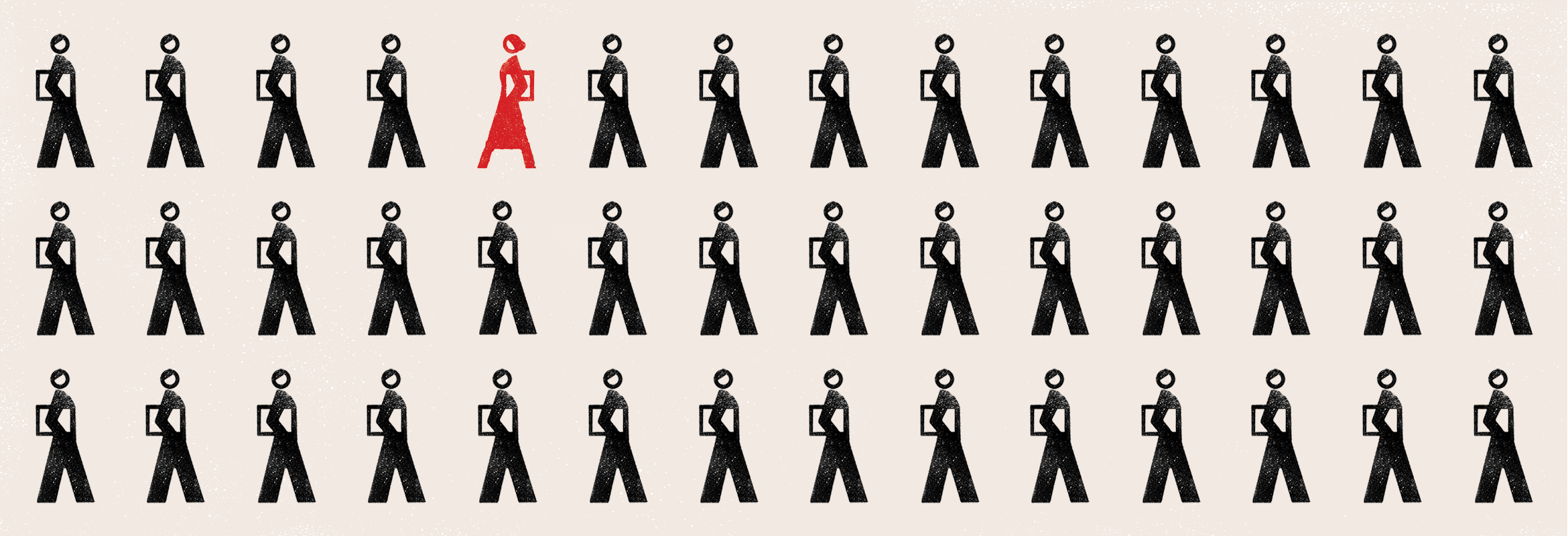
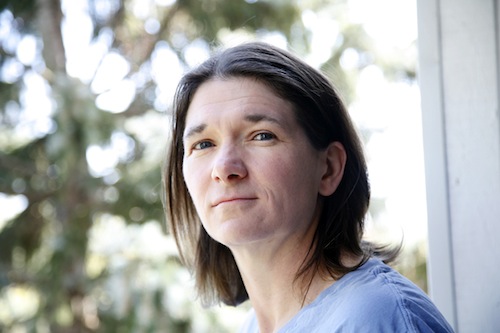
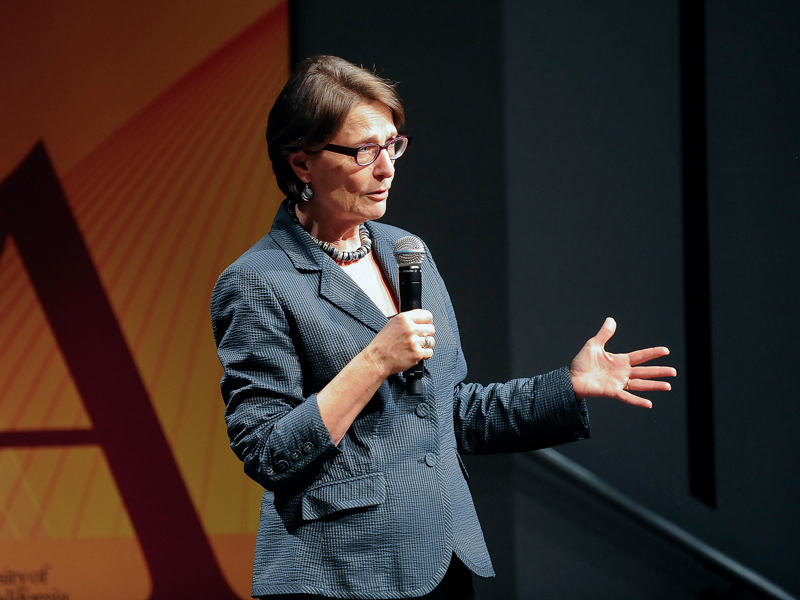 Photo Courtesy of USC Annenberg
Photo Courtesy of USC Annenberg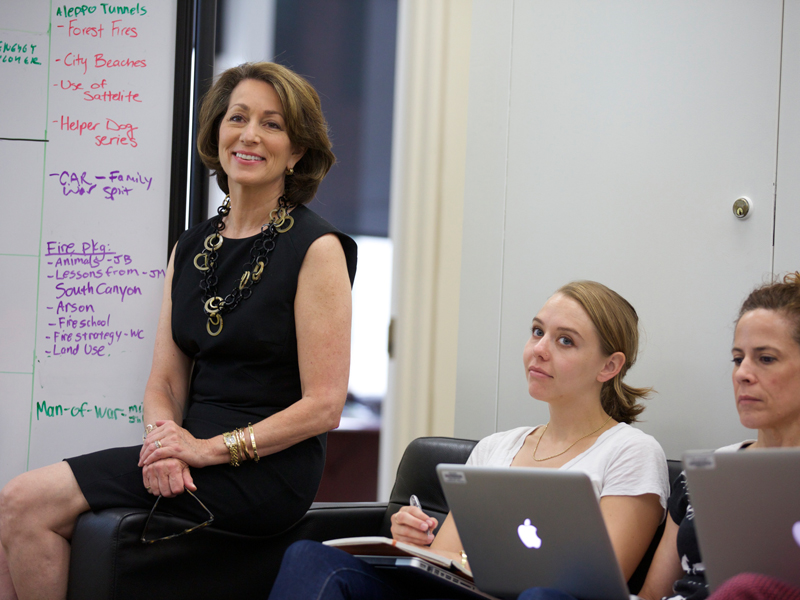 Becky Hale/National Geographic
Becky Hale/National Geographic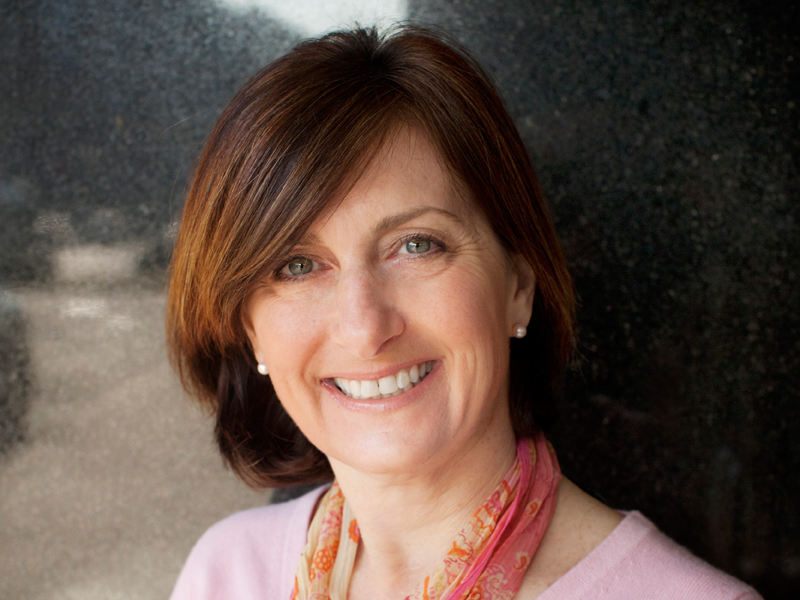 Kainaz Amaria/NPR
Kainaz Amaria/NPR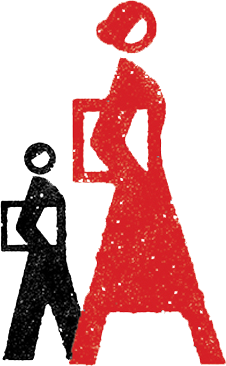
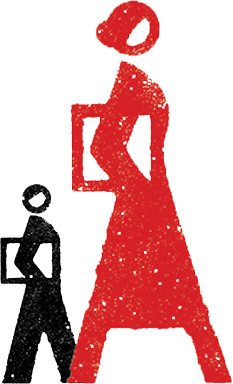
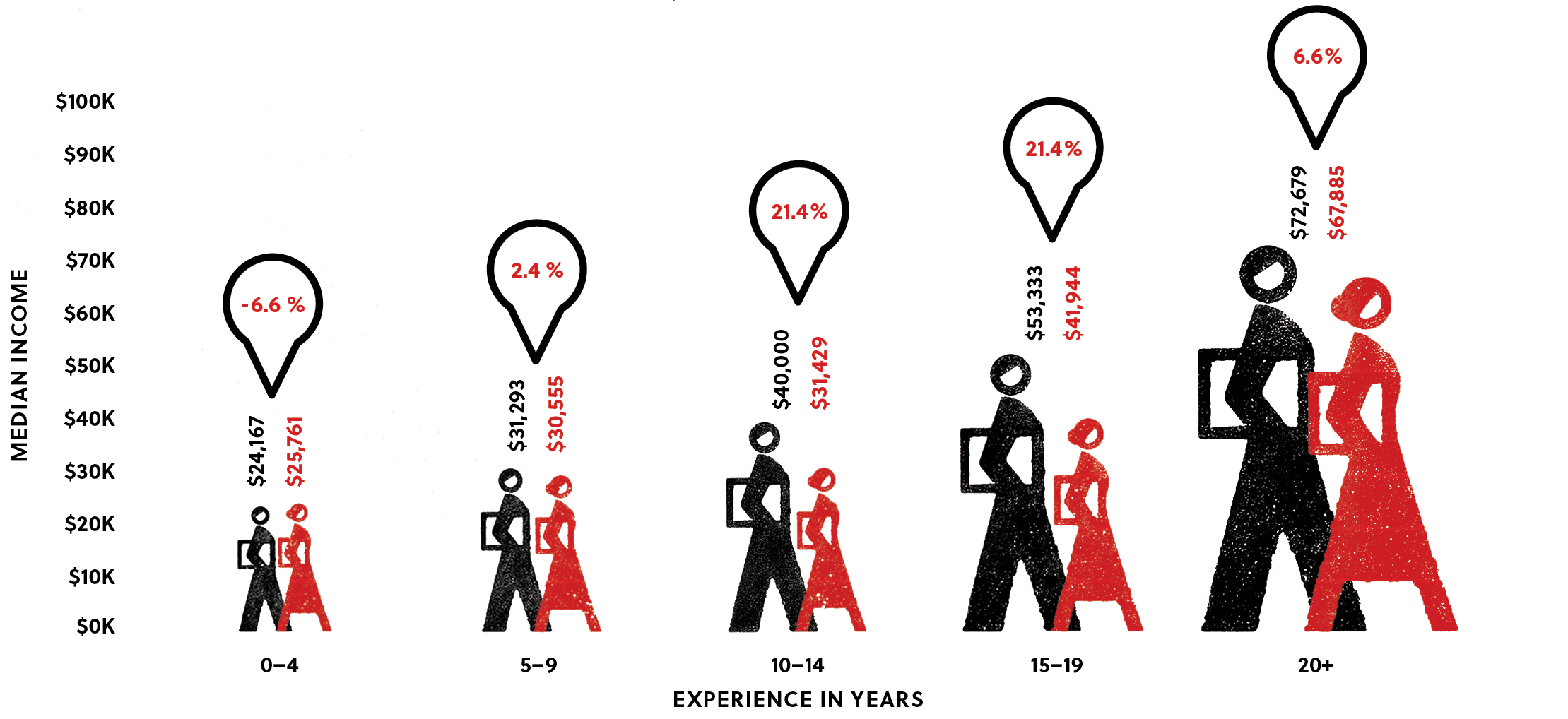
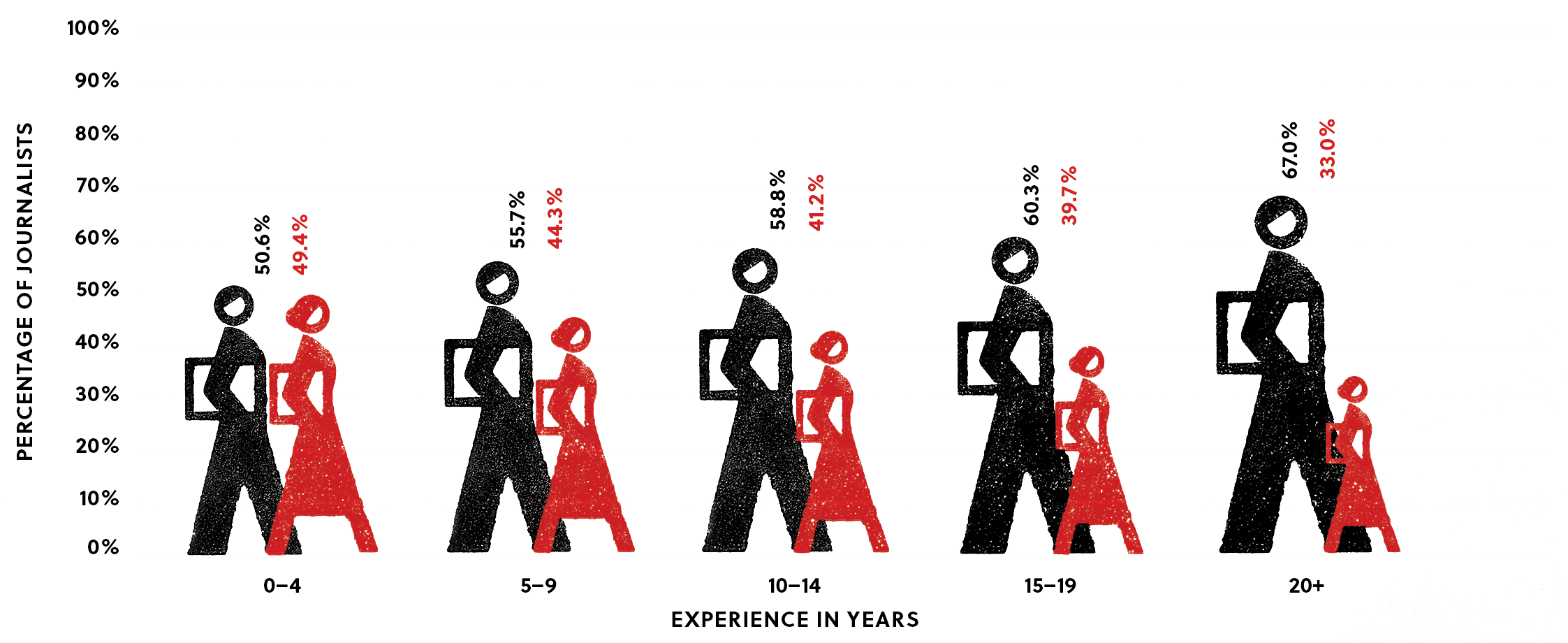
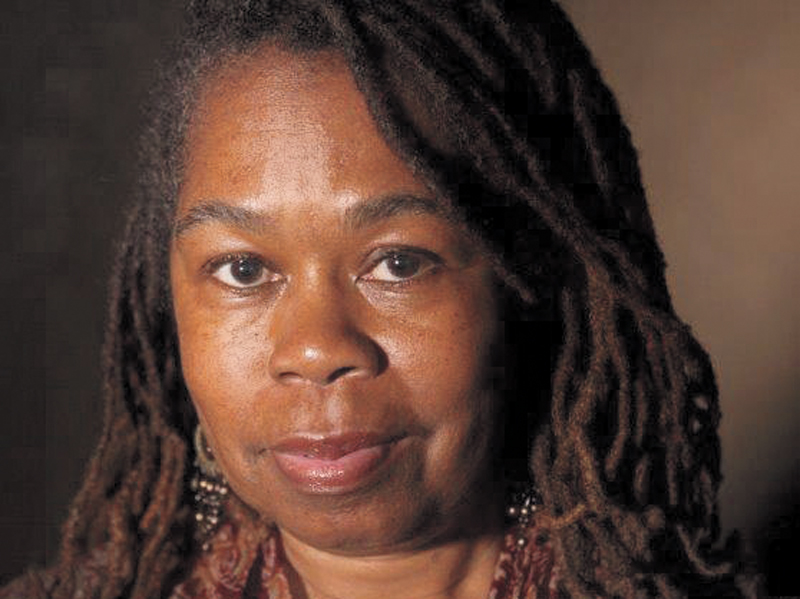 Michelle Kanaar/The Chicago Reporter
Michelle Kanaar/The Chicago Reporter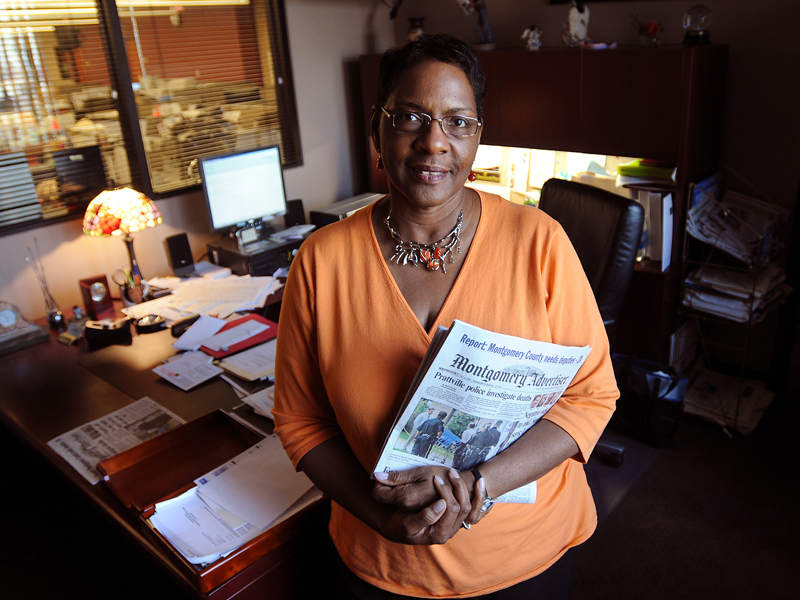 David Bundy/Montgomery Advertiser
David Bundy/Montgomery Advertiser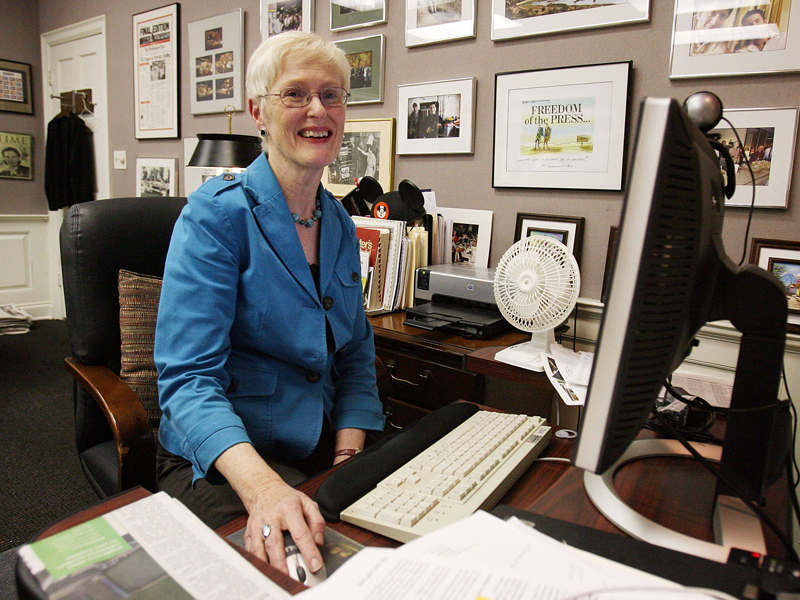 Orlando Sentinel
Orlando Sentinel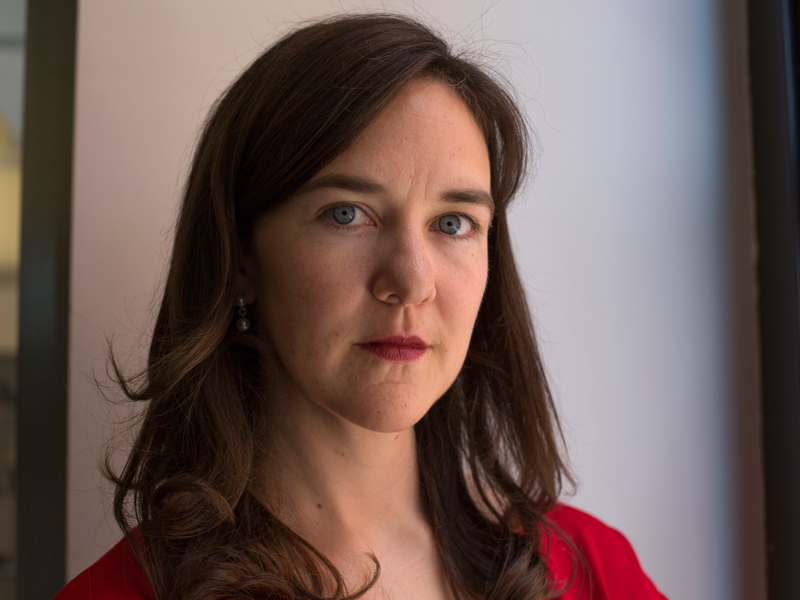 Juliana Jiménez Jaramillo
Juliana Jiménez Jaramillo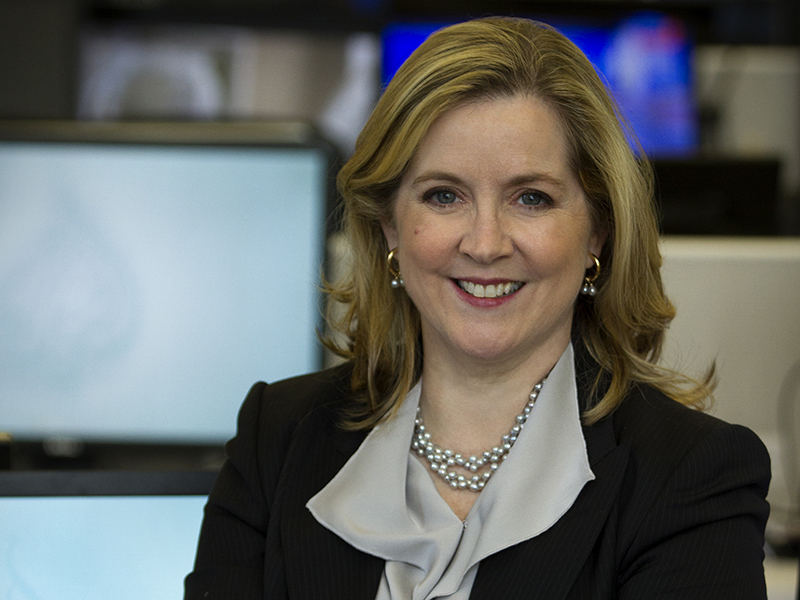 Courtesy of Al Jazeera America
Courtesy of Al Jazeera America





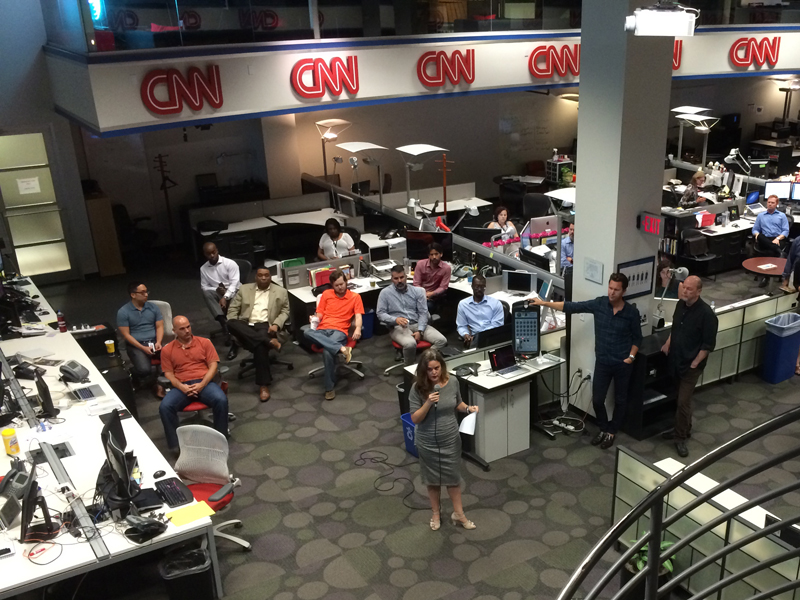 CNN
CNN Anna Wolf
Anna Wolf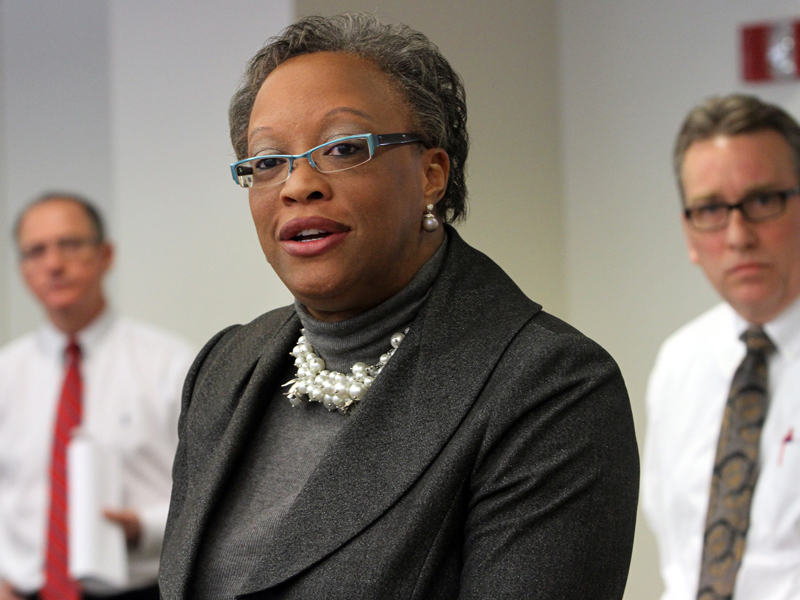 Lynn Ischay/The Plain Dealer
Lynn Ischay/The Plain Dealer